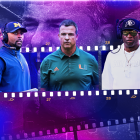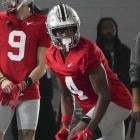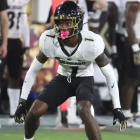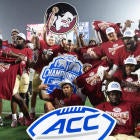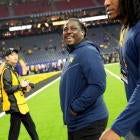Big 12 commissioner Bob Bowlsby has spent lots of time recently talking and thinking about what he calls an “upside down” NCAA academic model.
Instead of only penalizing negative behavior, Bowlsby believes there needs to be incentives to reward positive academic behavior. He said there should be competitive advantages for schools that graduate more players than others as opposed to only providing penalties -- such as postseason bans -- to schools with low Academic Progress Rate (APR) scores.
Lately, there’s very preliminary chatter within college sports of one way to do this: Roll back the clock and eliminate NCAA initial eligibility standards. Schools could accept whatever athletes they want academically but with graduation rates tied to scholarships as an incentive to enroll students who can play sports and graduate.
“The advantage would be the NCAA wouldn’t be viewed as the ogre in Indianapolis that keeps kids from having the opportunity to be eligible,” said Bowlsby, who stressed he doesn’t support the idea at this time. “Put it back on the schools, and maybe you tie initial scholarships to graduation rates. If your undergraduate population graduates at 70 percent and your athletic population graduates at 45, you don’t get to replace scholarships until you get to the place where you meet what the rest of the school does. There’s a lot of ways you could incentivize.”
The idea would be highly controversial. It’s not currently being considered by the NCAA Committee on Academic Performance, which, if anything, wants to strengthen the academic rigor of recruits. Starting this year, the NCAA initial eligibility standards are going to get tougher -- there will be less time for high schoolers to catch up academically, which sometimes leads to fraud. An academic redshirt year will be created for athletes who don’t meet the new minimum.
Since NCAA initial eligibility standards began in 1986, the minimum essentially became the baseline for many universities. Many schools have their own admission standards. But for 30 years there has always been a floor set by the NCAA, in large part because competitors don’t trust each other over who they will admit into school.
“I think (eliminating NCAA standards) would make a lot of people very uncomfortable at the beginning of that conversation because it would really be a significant and drastic shift,” ACC commissioner John Swofford said. “I think you’ve got a lot of heartburn sometimes with the NCAA trying to determine what high school courses and high schools are legitimate and what aren’t. Does the NCAA need to be in that business? Does the membership want it in that business? Or is there another way to address it?
“It’s thinking outside of the box, so to speak, on something very fundamental. For those of us that have been in the profession for a professional lifetime, it’s pretty hard to imagine there not being some type of initial eligibility standard. I don’t think that’s close to being reality, but there is some conversation.”
This is the second time in two years that some commissioners are discussing what many people would consider a radical idea. Last year, the Big Ten pushed out the idea of bringing back freshman ineligibility, an idea that has gained no traction.
No one would publicly point to the exact origin of this latest dialogue. Two sources said they believe it’s coming from the Power Five conferences, who have autonomy to create some of their own NCAA legislation, and stressed the talk is very early.
Pac-12 commissioner Larry Scott declined to comment. SEC commissioner Greg Sankey and Big Ten commissioner Jim Delany were not made available for comment.
“In terms of big-picture conversations, that’s the kind of stuff we need to get into a room and talk about it,” Bowlsby said. “The NCAA Eligibility Center clears thousands and thousands of students a year, and they hold up the certification and get hung up on 150 sets of credentials. It’s a behemoth to avoid a very, very narrow group of kids that have questionable credentials.”
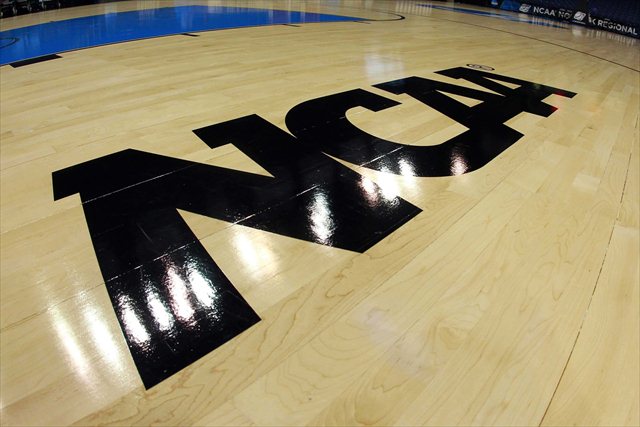
Frustration with NCAA Eligibility Center
A Big 12 school was part of a recent high-profile NCAA initial eligibility case. The NCAA delayed for months an eligibility decision on Kansas freshman basketball player Cheick Diallo while evaluating the academic merits of his private school and his relationship with his guardian.
In a stinging Nov. 10 letter to NCAA executive vice president Oliver Luck, Kansas athletic director Sheahon Zenger said the university had spent almost “six figures” investigating Diallo’s case and believed it was money well spent due to the number of “serious and legitimate misrepresentations attributed to NCAA process, unfounded verbal statements and inadequate professional standards.” Two weeks later, the NCAA cleared Diallo to play after a five-game suspension for impermissible benefits.
“Our goal is to have eligibility decisions made prior to the start of a student-athlete's season,” Luck said in a statement at the time. "However, this was a complicated case involving international transcripts and a high school that remains under review. Additionally, staff considered a complex set of circumstances regarding amateurism.”
The NCAA Eligibility Center, which used to be called the Clearinghouse, was created to approve courses offered by high schools and certify athletes’ transcripts. In 2006, the NCAA Board of Directors gave the Eligibility Center authority to investigate schools with questionable academic rigor and declare athletes attending those schools ineligible. The reason: A growing number of “diploma mills,” which tend to be prep schools looking to get on the map in basketball and where high school recruits can get degrees from with ease.
Today, the Eligibility Center examines about 100,000 high school recruits each year, with about 10 percent of them becoming non-qualifiers, according to the NCAA. The NCAA said the “vast majority” of cases are completed within the Eligibility Center’s standard 10 business days, but it’s not uncommon for cases to need additional review. About a dozen NCAA employees work specifically on reviewing transcripts and flexible staffing allows approximately 60 people to help during peak periods. The NCAA declined to be interviewed for comment for this article.
Vocal critics of the NCAA, such as ESPN broadcaster Jay Bilas, have stated college sports' governing body has no business making initial eligibility decisions and isn’t qualified to do so. The alternative would be to let accredited universities evaluate and admit students however they choose -- something some commissioners are at least talking about.
“I guess I would just remind people of history,” said MAC commissioner Jon Steinbrecher, who heard the discussion for the first time last week at the NCAA convention. “We got into the initial eligibility business because the NCAA institutions were being accused of exploiting these kids and not being able to bring kids in who are able to do the work and get a degree. As a way to combat that, we put in some pretty basic standards.”
History of NCAA academic eligibility
For decades, the NCAA and its schools have struggled with how to handle initial eligibility. In 1965, the NCAA adopted the “1.6 rule,” which required predicting that an incoming athlete would have at least a 1.6 GPA and maintain it in order to be on athletic scholarship or play. Some conferences required additional minimum standards.
When the Ivy League refused to abide by the NCAA rule, the league’s athletes were banned from NCAA competition. Ivy League presidents were reluctant to turn over their admission standards. Some of them said at the time the NCAA had no right to act in academic matters, believing that an athletic organization that determines academic policy was dangerous to the integrity of college sports.
By 1972, the “1.6 rule” was gone. Freshman eligibility soon followed and, for a while, a recruit basically only needed to graduate from high school to play in college. A survey by the Chronicle of Higher Education in the 1980s found that 35 out of 100 Division I schools reported graduation rates under 20 percent for their men’s basketball players, and 14 schools were under 20 percent for football players. (Today, the NCAA’s Graduation Success Rate says 77 percent of Division I men’s basketball players and 75 percent of FBS football players are graduating. The NCAA metric differs from the federal rate.)
A consensus emerged in the 1980s that minority athletes were getting exploited for sports while being pushed aside academically, according to a 2000 article by Michael Mondello of Villanova University that studied the history of NCAA academic eligibility. Universities believed their educational mission was at risk without tougher NCAA standards and that a level playing field academically was needed for competitive purposes.
The NCAA approved minimum standards in 1983 called Proposition 48, which began three years later. Athletes were required to carry a minimum 2.0 GPA in 11 core courses and a combined 700 score on the SAT. More than 200 high school football and basketball players that were scheduled to receive athletic scholarships failed to meet the new standards in 1986, according to a New York Times survey that year.
In 1989, Georgetown basketball coach John Thompson led protests against Proposition 42, the NCAA rule that forbid freshmen from receiving university aid if he or she failed to meet NCAA initial eligibility standards. Thompson contended that the standards on college entrance exams treat low-income youths unfairly. The rule was rescinded.
Through the years, the NCAA raised the bar on its academic floor. Recently, the NCAA has trumpeted a rule starting in August, when freshmen athletes will be required to have completed 16 core courses with a minimum 2.3 GPA in those classes (10 of which must be completed by their seventh semester of high school), and have a minimum sum ACT/SAT score that matches the core GPA. For instance, a 2.5 GPA requires a 1000 SAT or 85 sum ACT.
“I think we’re just at the beginning of the (initial eligibility) debate,” American Athletic Conference commissioner Mike Aresco said. “The new standards will probably prove to some extent controversial because there are late bloomers who may or may not be thinking about college as seriously as they would later in their high school career.”
The academic redshirt year means a freshman who doesn't meet the new standards can still go on scholarship and practice for the first term, but can't compete in the first year of enrollment. The athlete must be academically successful after the first term to practice for the rest of the year. The discussions Aresco has heard focus on how useful the new standards will or won't be, not eliminating NCAA initial eligibility altogether.
“I like the emphasis on education because one area we’re clearly under attack is whether education is still our primary mission,” Aresco said. “Otherwise, we just become a professionalized version of something that we don't want to be. Every time you adopt these standards it’s an imprecise science. The motive is good.”
Bowlsby: College sports deserves to be called hypocrites
Would it make sense to put more onus on universities for admittance decisions through incentives while possibly maintaining penalties? Currently, schools can be penalized for low APR scores if their athletes aren’t adequately progressing toward a degree. Very few major programs get penalized. They have resources with administrators to monitor grades and tutors to offer assistance. (This much attention on eligibility has also led to academic fraud scandals, which have stood the test of time in NCAA history.)
One criticism of APR is it can be easily manipulated and doesn’t measure if a player is actually being educated with skills that will help them after they're done playing. In a recent NCAA survey, 36 percent of FBS football players and 29 percent of Division I men's basketball players said participating in sports prevented them from majoring in what they want. Eleven percent of the football players and 7 percent of the basketball players said they regret their major choice.
Gerald Gurney, president of the reform-minded Drake Group, said the NCAA's initial eligibility standard is "a joke" because it's set way too low for most public universities. The Drake Group has been pushing for one-year residency without competition for freshmen whose high school GPA or standardized test scores are below one standard deviation from the mean academic profile of their entering class as determined by the university.
"Coaches who cannot have their phenom eligible immediately may pass on an athlete who is not a good fit and should probably go elsewhere," said Gurney, a former senior associate athletic director for academics at Oklahoma. "The obvious question is will this stop (academic) cheating? No, but it places the onus on institutional officials best equipped to decide. In the meantime, the NCAA is making boodles of cash from their eligibility clearinghouse that is wasteful and unnecessary."
In one idea being discussed, scholarships would be tied to graduation rates after always being used as a disincentive by the NCAA. Scholarship numbers are capped by NCAA maximum limits. That means they can be reduced by penalties, such as a low APR score or NCAA violations, but can't be increased due to positive behavior.
“I’m much more of a fan of disincentives just for Title IX inequity issues in terms of how you plan,” said Steinbrecher, the MAC commissioner. “I’d be fearful of a football program who’s planning on having 85 grants and somehow they incentivize their way to 125 grants. That’s problematic.”
But Bowlsby thinks the model is backward. He said there is too much confusion between the Graduation Success Rate (the metric created by the NCAA), the federal grad rate and APR. Schools use the measurements to tout their players' supposed academic success.
“They all have different purposes and different outputs yet we have institutions getting away with saying, ‘Well, we graduate 85 percent of our kids who become seniors,’” Bowlsby said. “Yeah, well, you do, except 50 percent of your incoming classes have left and here you are using it in that way. I think we need to get one set of numbers and stop using the other ones.”
Bowlsby’s working theory: Higher academic rates -- through just one metric that gets chosen -- would equal more advantages for a school. These benefits could include more access to recruits, the postseason, and coaching salary increases, he said. Collectively limiting salaries couldn’t happen due to precedent in a past NCAA antitrust case involving coaches' compensation.
“This is on an individual basis for coaches,” Bowlsby said. “There’s nothing wrong with building graduation rates into contracts. Our biggest problem is we’re too frequently at odds with our own stated principles. We say we care about education, and we play football games on Tuesday nights.”
Basketball games also get played on Tuesday nights -- a lot more.
“Well, yeah, but that’s different on a campus than a football game,” Bowlsby said. “I’m not talking about the athletes (being away from class). I’m talking about the impact it has on a university. It’s not inconsistent with basketball. We play basketball games all over everywhere. We’re playing them during final exams because our league says we have to play during final exams. Well, we can fix that. In short, we’re just too frequently at odd with our own stated principles, and when you’re at odd with your stated principles, you get called a hypocrite and you deserve it.”
So last year, college sports talked about freshman ineligibility. And this year, the talk is about removing NCAA initial eligibility standards, even though it's doubtful university presidents would ever stomach that shift.
This much is clear: Just like their predecessors, people who work in college sports today continue to wrestle with college sports’ inevitable and never-ending tension of linking higher education with commercial entertainment.
Follow and read more from Jon Solomon on Facebook and Twitter.












